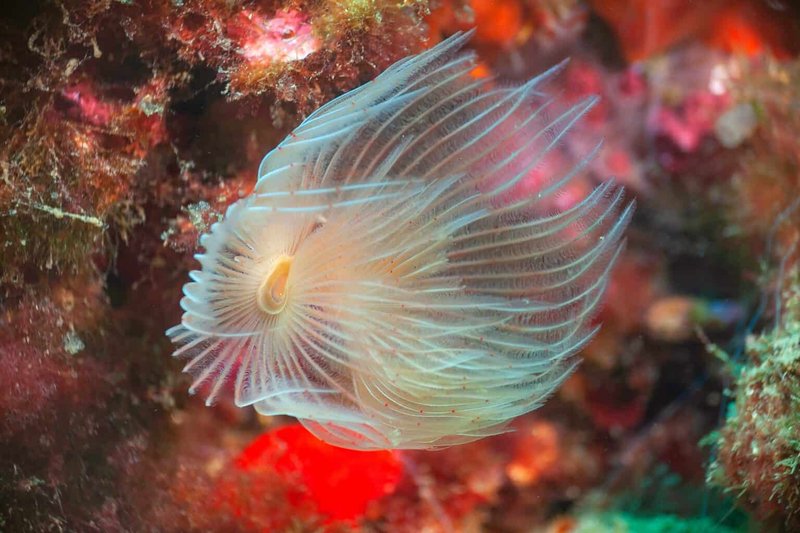
So, how often do these bristle worms reproduce, and what can you expect during their spawning events? It’s like throwing a surprise party in the ocean! In this article, we’ll dive into the details of bristle worm spawning, from their unique life cycle to tips on what you can do as an aquarium owner.
What are Bristle Worms?
Before we chart out the spawning mystery, let’s make sure we’re clear on what bristle worms actually are. These creatures belong to the *Polychaeta* class and are part of the annelid family. They can be brightly colored or appear fairly nondescript, depending on their species.
Bristle worms are known for their bristles—tiny, hair-like structures that cover their bodies. These bristles serve multiple purposes, including mobility and protection. Honestly, they look a bit like the ocean’s version of a tumbleweed, rolling along the seafloor, cleaning up and scavenging as they go.
In an aquarium setting, they’re often seen as a natural form of pest control. They munch on algae and leftover food, which means they can help maintain a healthy environment for your other aquatic friends. However, too many bristle worms can be a sign of overfeeding, so it’s a balancing act!
Spawning Cycle of Bristle Worms
Bristle worms can reproduce in a few different ways, depending on their species. Most often, they spawn through a method known as external fertilization. This is where the female releases eggs into the water, and the male releases sperm nearby. Think of it as a synchronized dance in the water, where timing is everything!
Typically, bristle worms spawn at night, which can make it a bit challenging to witness this event. You might catch them when conditions are just right—like during a full moon or when the water temperature rises. These factors can trigger their secretive and spontaneous spawning behavior.
The frequency of these spawning events can vary. Some species might spawn once a month, while others might only do it a couple of times a year. Honestly, it all depends on environmental cues and species variations. Just when you think you have them pegged, they throw in a surprise or two!
Signs of Spawning in Your Aquarium
So, now that you know how bristle worms reproduce, what should you look for if you’re hoping to catch the action? During spawning, you might notice some telltale signs:
- Increased Activity: Bristle worms tend to become more active and visible during spawning. You might spot more of them scuttling around than usual.
- Cloud of Particles: When spawning, the water might look cloudy as eggs and sperm mix. It can be a fascinating sight!
- Color Changes: Some species might change color slightly as they prepare to spawn.
It’s like watching a fireworks show happen under the sea, with everything bubbling up at once. You might even see other fish or critters getting in on the action, as they take advantage of the free meal that comes with those floating eggs!
Impact of Spawning on Your Aquarium
You might be wondering, “Is this spawning event good or bad for my tank?” Well, it depends on how you look at it. On one hand, bristle worm spawning can be an excellent sign of a healthy ecosystem. It shows that your aquarium is providing the right conditions for these creatures to thrive.
On the flip side, an overabundance of bristle worms can lead to potential problems. If they breed too frequently, it may indicate that the nutrient levels are high—often from overfeeding or poor tank maintenance. Too many worms can outcompete other beneficial organisms, affecting the overall balance of your tank.
Keeping an eye on your bristle worm population is essential. If it seems like they’re multiplying too quickly, it might be time to evaluate your feeding habits and the waste levels in the tank.
Benefits of Bristle Worms in Your Aquarium
Despite their strange appearance, bristle worms do have some fantastic benefits for your aquarium. Here’s why you shouldn’t rush to get rid of them:
- Natural Cleaners: As scavengers, bristle worms help clean up organic debris and uneaten food, reducing waste buildup.
- Food Source: They can also serve as a food source for some fish species, promoting a balanced ecosystem.
- Soil Aerators: Their burrowing behavior helps aerate the substrate, which can be beneficial for the health of your tank.
You see, they play a crucial role, even if you don’t want them taking center stage in your aquarium. It’s all about balance!
What To Do If You Have Too Many Bristle Worms
If you’ve noticed a sudden increase in bristle worm numbers and you’re concerned, there are steps you can take. Don’t panic! Here’s what you can do:
- Reduce Feeding: First and foremost, cut back on feeding. This will help control the population, as they thrive on leftover food.
- Improve Maintenance: Regularly clean your tank and do partial water changes to keep nutrient levels in check.
- Consider Natural Predators: If you want to manage their numbers, you might look into adding fish or other species that feed on bristle worms.
Again, it’s about maintaining the balance in your unique underwater ecosystem!
Bristle worm spawning is one of nature’s little miracles, adding intrigue and excitement to the aquatic world. By understanding their spawning habits and how they impact your aquarium, you can make informed decisions that lead to a healthy tank environment.
Remember, moderation is key, so keep an eye on your bristle worm population. With a little observation, you’ll gain a deeper appreciation for these intriguing creatures and the role they play beneath the surface. Whether you just find them cool or want to use them to your advantage, bristle worms certainly add their charm to the aquatic world!

